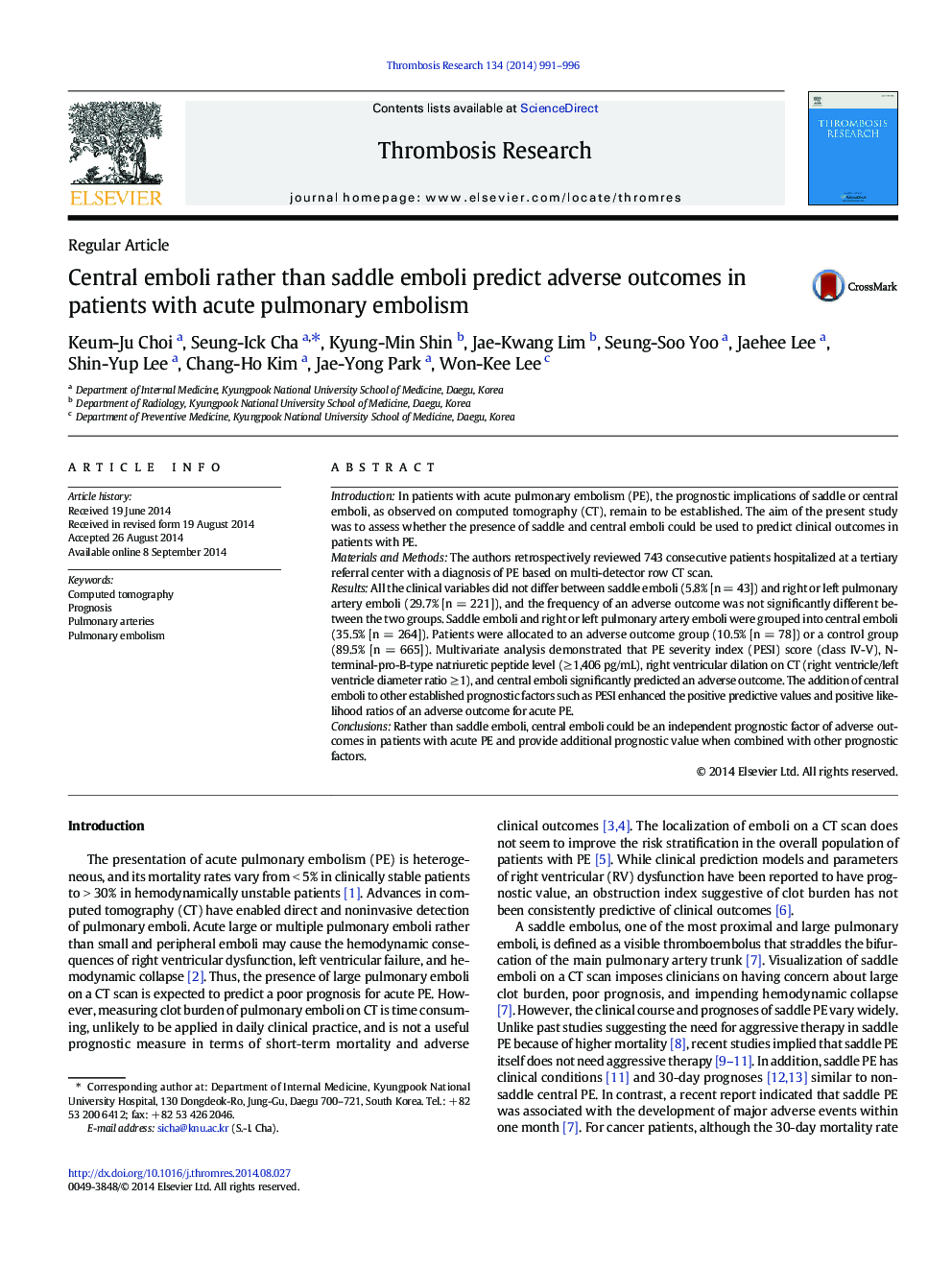| کد مقاله | کد نشریه | سال انتشار | مقاله انگلیسی | نسخه تمام متن |
|---|---|---|---|---|
| 6001707 | 1182956 | 2014 | 6 صفحه PDF | دانلود رایگان |
- Distinction of saddle and non-saddle central pulmonary embolism is not necessary.
- Saddle pulmonary embolism is not a significant predictor of an adverse outcome.
- Central pulmonary embolism is an independent predictor of an adverse outcome.
- Central emboli may provide an additional benefit with other prognostic factors.
IntroductionIn patients with acute pulmonary embolism (PE), the prognostic implications of saddle or central emboli, as observed on computed tomography (CT), remain to be established. The aim of the present study was to assess whether the presence of saddle and central emboli could be used to predict clinical outcomes in patients with PE.Materials and MethodsThe authors retrospectively reviewed 743 consecutive patients hospitalized at a tertiary referral center with a diagnosis of PE based on multi-detector row CT scan.ResultsAll the clinical variables did not differ between saddle emboli (5.8% [n = 43]) and right or left pulmonary artery emboli (29.7% [n = 221]), and the frequency of an adverse outcome was not significantly different between the two groups. Saddle emboli and right or left pulmonary artery emboli were grouped into central emboli (35.5% [n = 264]). Patients were allocated to an adverse outcome group (10.5% [n = 78]) or a control group (89.5% [n = 665]). Multivariate analysis demonstrated that PE severity index (PESI) score (class IV-V), N-terminal-pro-B-type natriuretic peptide level (â¥Â 1,406 pg/mL), right ventricular dilation on CT (right ventricle/left ventricle diameter ratio â¥Â 1), and central emboli significantly predicted an adverse outcome. The addition of central emboli to other established prognostic factors such as PESI enhanced the positive predictive values and positive likelihood ratios of an adverse outcome for acute PE.ConclusionsRather than saddle emboli, central emboli could be an independent prognostic factor of adverse outcomes in patients with acute PE and provide additional prognostic value when combined with other prognostic factors.
Journal: Thrombosis Research - Volume 134, Issue 5, November 2014, Pages 991-996
